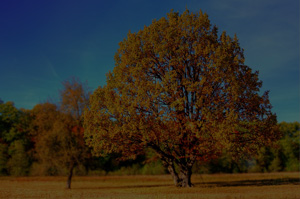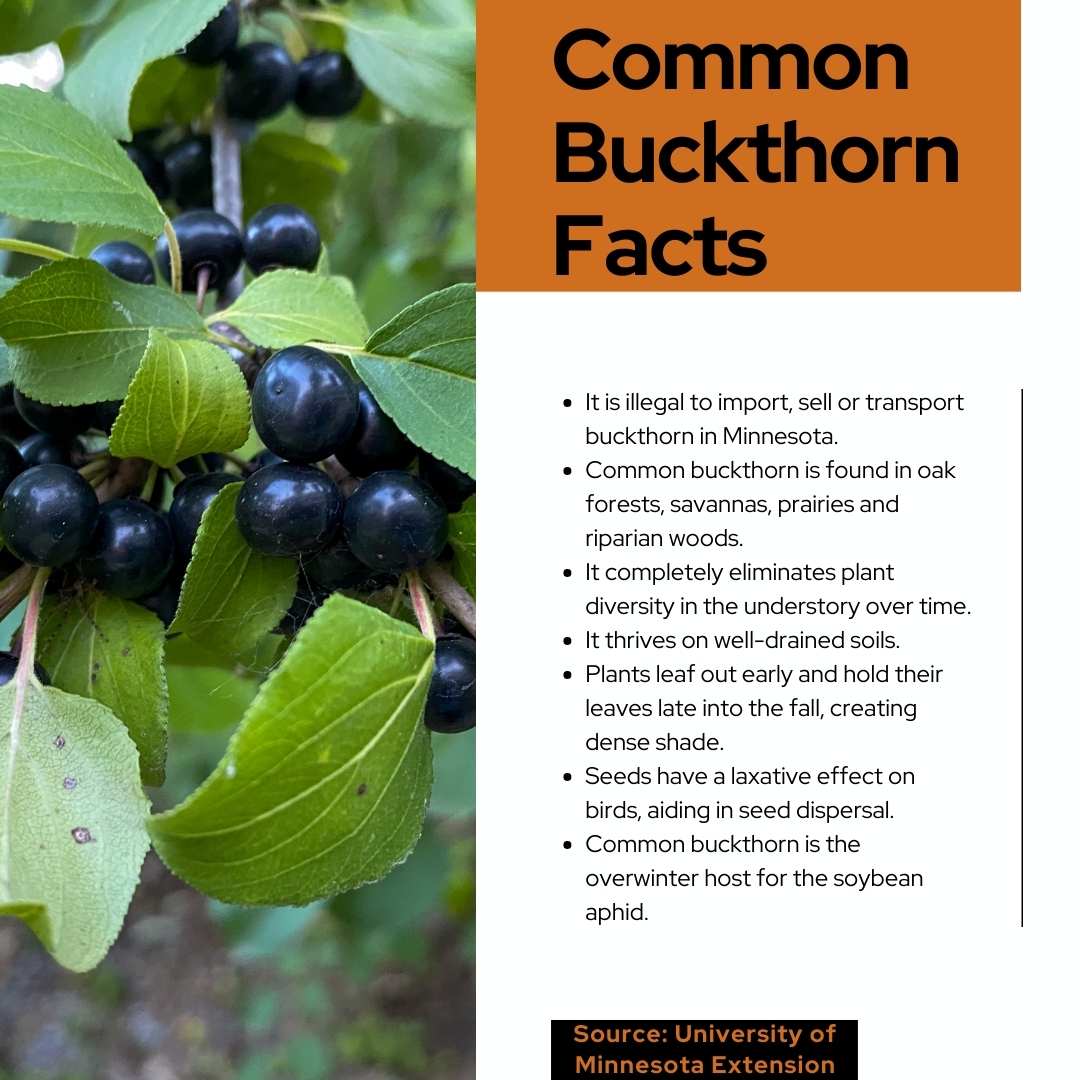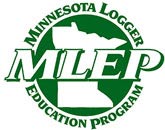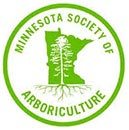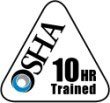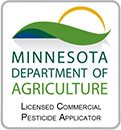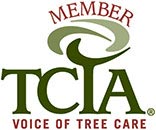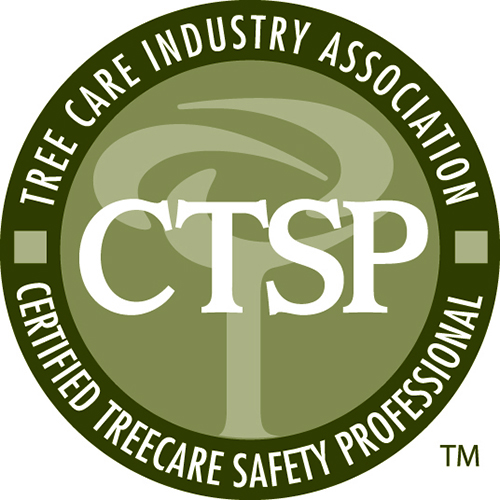Common buckthorn is a non-native, invasive buckthorn species found in Minnesota. The species was introduced to Minnesota from Europe in the mid-1800s as a popular landscaping shrub. But over time, it became a nuisance plant forming dense thickets in forests, yards, parks, and roadsides. Although innocent in appearance, buckthorn can take over and crowd out native plants, shrubs, and trees in the mid-layer of the forest where many species of birds nest. The Minnesota Department of Agriculture lists buckthorn as a restricted noxious weed, meaning that the sale, transport, or movement of this plant is prohibited.
Common Buckthorn (Rhamnus cathartica)
Identification
Buckthorn is most identifiable in the late fall when most plants are changing colors and browning. Buckthorn will remain green for a longer period of time and is easily confused with dogwoods, plums, and cherries.
Shape
10-25 feet tall, oval form, upright, and frequently multi-stem.
Habitat
Dry to moist areas such as woodlands, savannas, abandoned fields, prairies, and roadsides. It is a hardy shrub and can survive drought conditions.
Branches
The bark is flaky and upon tearing it back, an orange inner tissue will be revealed called the heartwood.
Leaves
Leaves are arranged alternately and bear an oval shape with a tipped end. They have finely-toothed edges and are dark green in color. Buckthorn will leaf out in early spring and hold their leaves until late fall. The leaves are high in nitrogen and calcium making them attractive to decomposers like earthworms. When decomposers consume these leaves, the soil chemistry changes and it attracts other weedy species.
Flowers
Hidden where the leaf meets the twig, the buckthorn flower is small, yellow-green in color, with four petals that are produced in May or June.
Fruit
The fruit is round, green (unripe) to black (ripe) ¼ inch berries that are arranged in clusters.
Uses
The fruit contains a yellow dye and is rich in protein. Oils from the seeds are used for making printer ink, soap, and lubricating oil.
Threats
Buckthorn does not have any specific predators. In fact, most animals stay away from the plant. On occasion, birds will eat buckthorn berries which produce a laxative effect that makes the birds sick and can even result in death. Because of this, the birds end up spreading seeds when they consume buckthorn berries, propagating the growth of the plant.
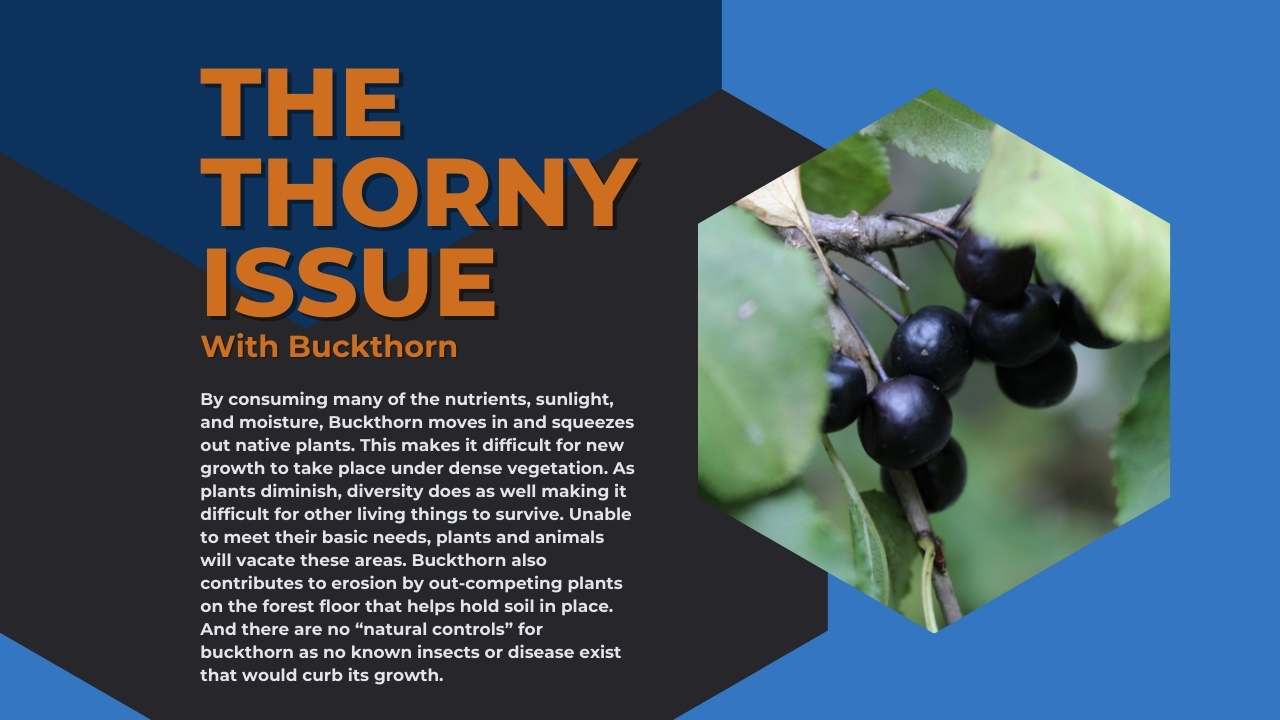
How to Remove buckthorn?
Fire
The best way to get rid of Buckthorn is to remove the tree all the way down to its roots and then set the removed pieces on fire. Fire is one of the ways that can truly dispose of the tree and keep it from regrowing. Fire offers a long-term option in large areas and burning will need to take place every two or three years to fully eradicate an area of buckthorn.
Chemicals
Buckthorn can be removed by cutting the stem at the soil surface and then treating the stump with glyphosate and spraying a triclopyr/oil diluent mix around the stem. This method can harm surrounding trees and can be cost-efficient. The best time to treat the stumps is within two hours after cutting. And if chemicals are used, they should be applied during late summer and throughout the fall.
Non-Chemical Control
Smaller buckthorn plants can be removed by hand. Various hand tools, such as a root talon, can easily pull the shrub out. This process does disturb the soil and is not recommended on sensitive sites or steep slopes.
Professionals
The easiest route is to have professional arborists from Precision Landscape and Tree remove the buckthorn. They are equipped with the proper tools and chemicals to attack this noxious weed. And, they have the knowledge to address buckthorn on an annual basis as follow-up is necessary.
Buckthorn Removal is an Ongoing Process
With any method, follow up is critical as buckthorn seeds can remain viable in the soil for up to five years. Control of emerging seedlings after initial efforts is important and failure to follow-up will almost ensure that buckthorn will return. It is best to leave the noxious weeds on-site to prevent seed spread. But if the material must be moved, contact a yard waste facility to see if they accept noxious weeds. Although the transport of buckthorn is prohibited, it is allowed for the purpose of disposal. The management of areas affected by buckthorn is an ongoing process. Removing it, disposing of it, and annual follow-ups can be time-consuming. But once buckthorn is removed it will benefit the environment, provide opportunities for new wildlife habitat, redesign the landscape, and beautify an area.
